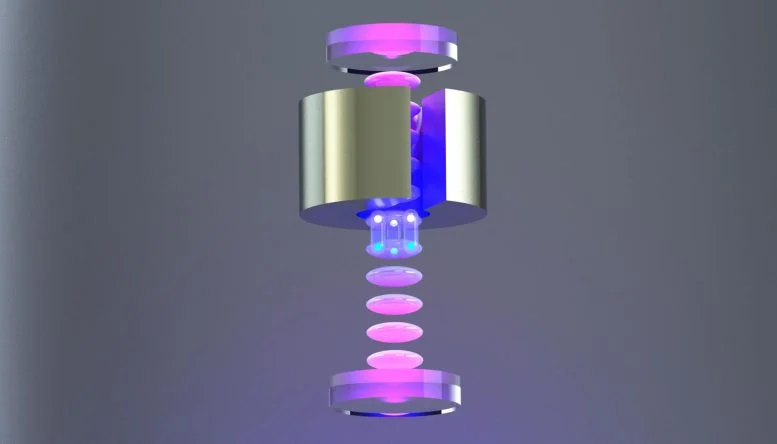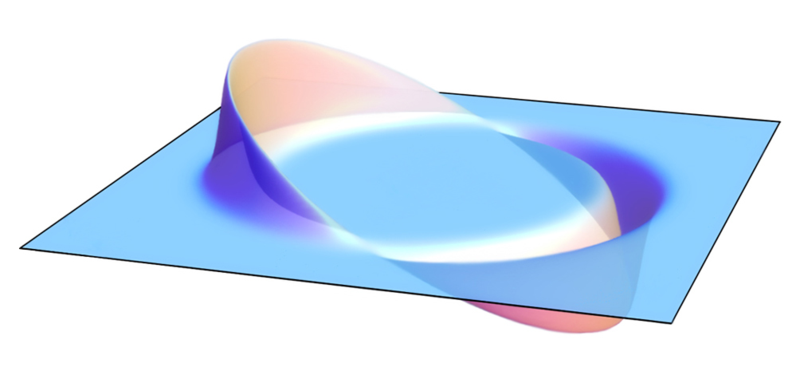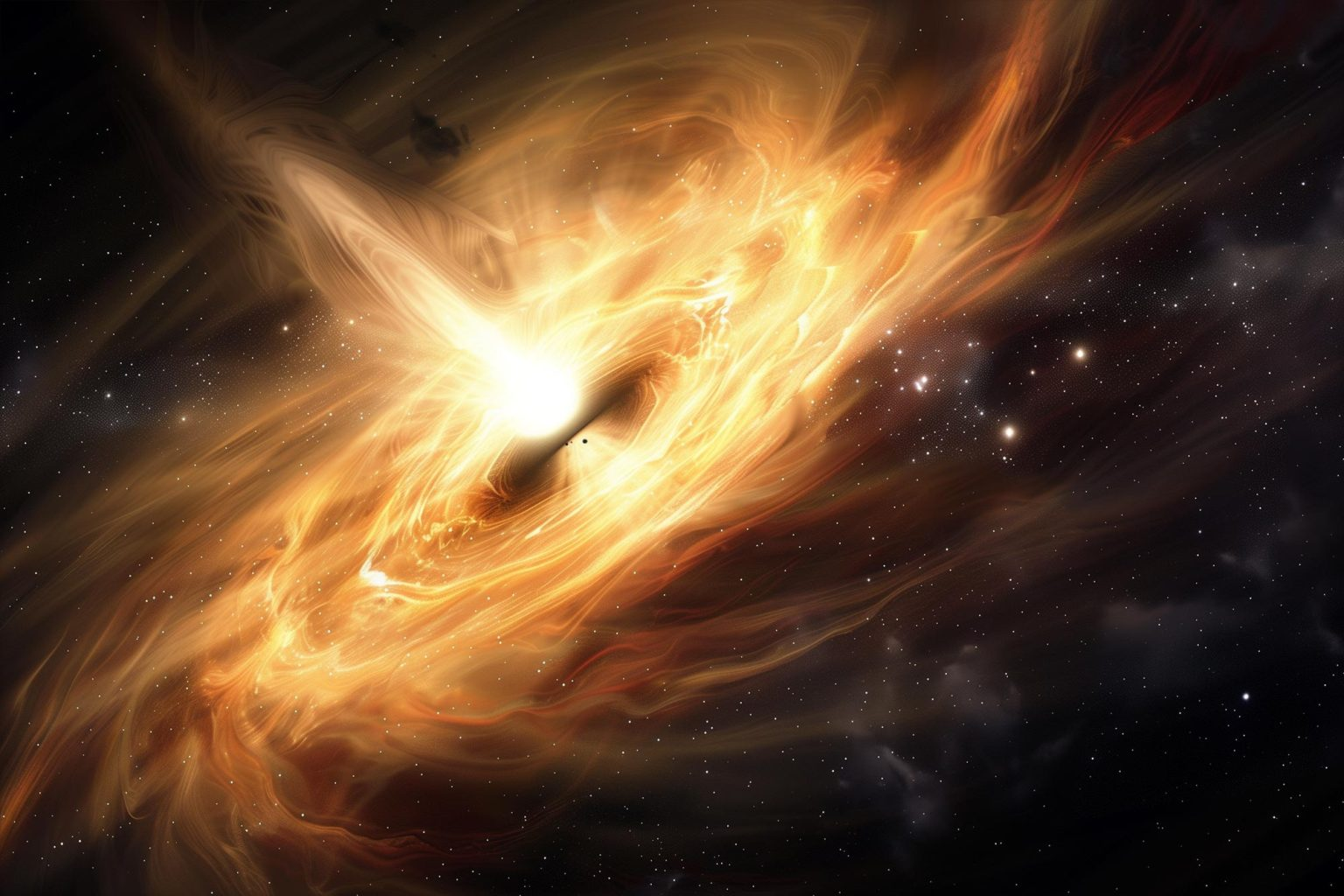"Physicists at UC Berkeley immobilized small clusters of cesium atoms (pink blobs) in a vertical vacuum chamber, then split each atom into a quantum state in which half of the atom was closer to a tungsten weight (shiny cylinder) than the other half (split spheres below the tungsten). (ScitechDaily, Beyond Gravity: UC Berkeley’s Quantum Leap in Dark Energy Research)
By measuring the phase difference between the two halves of the atomic wave function, they were able to calculate the difference in the gravitational attraction between the two parts of the atom, which matched what is expected from Newtonian gravity. Credit: Cristian Panda/UC Berkeley" (ScitechDaily, Beyond Gravity: UC Berkeley’s Quantum Leap in Dark Energy Research)
Researchers at Berkeley University created a model that can explain the missing energy of the universe. The idea is that the particles and their quantum fields are whisk-looking structures. Those structures form the superstrings that are extremely thin energy fields. In the same way, gravity waves are similar superstrings. The strength of the gravity waves depends on many things. And that means some gravity waves are stronger than others.
That can cause a situation in which some particles turn higher energy than others. As I wrote many times, gravity waves are like all other waves. There is a higher area behind the wave. That pushes the wave forward. And the lower point in the quantum field, which is like a ditch in water. Pulls the wave forward.
All waves move similarly. The energy ditch at the front of that wave makes the wave move. If that energy ditch is deeper, that increases the speed of the wave. When we look at the waves, only energy ditch at the forward of them is required that the wave moves. The difference in the height between the (energy) ditch and (energy) hill determines the speed of particles between them.
(Image 2)So theoretically. There is no need to form a high-energy wave behind the wave. Only a deep energy ditch ahead of the wave is enough that it move faster than it should.
In the image of the Alcubierre drive's model or diagram (Image 2), you can see how wave movement transports craft forward. The object travels between the energy hill and the energy ditch. The difference between the levels of the higher wave and the energy ditch determines how fast the particle or wave can travel.
(Image 3) "Two-dimensional visualization of an Alcubierre drive, showing the opposing regions of expanding and contracting spacetime that displace the central region." (Wikipedia, Alcubierre drive) The image can also portray how a ring-shaped structure moves energy from the front of the structure to the back of it.
So that causes the thought that maybe in the universe is a virtual particle. That looks like a ring. When that ring starts to rotate around its horizontal axle, it starts to act like an impeller. Image 3 can be the diagram of that particle. The energy hill forms when that hypothetical structure transfers the quantum field back to the structure.
When the particle's front side hits the layer, that is a quantum field, it transfers energy into itself. And then, it starts to turn away because energy travels away from it. The energy hill forms behind that particle. When a particle rotates, it transports energy back to it, forming an energy hill behind it.
In some models, gravitons are also quantum-size black holes. And there is a similar structure that looks like Saturn's rings around that still hypothetical particle. When gravity waves that are coming from that structure impact with other superstring rings. Those impacting gravity waves rotate those string wheels around their axles. When those rings rotate vertically, they push E.M. or quantum field into one direction.
That thing can form a situation in those quantum rings that pull the quantum fields across the layers. Those quantum rings make it possible that the graviton itself is invisible. That ring pushes radiation away from the center of that structure. And the black hole pulls strings into it if they travel through that ring structure.
https://scitechdaily.com/beyond-gravity-uc-berkeleys-quantum-leap-in-dark-energy-research/
https://www.gadgetshint.in/2024/05/the-alcubierre-warp-drive-surfing.html
https://en.wikipedia.org/wiki/Alcubierre_drive















